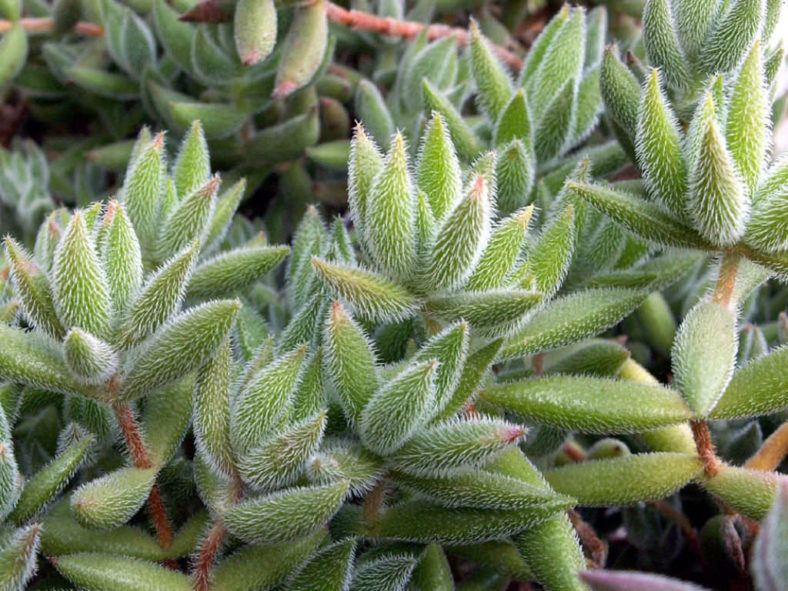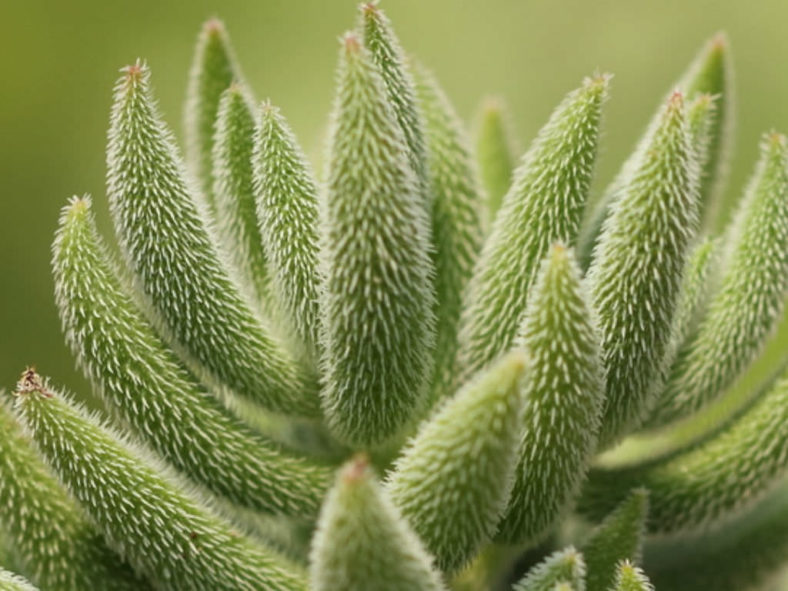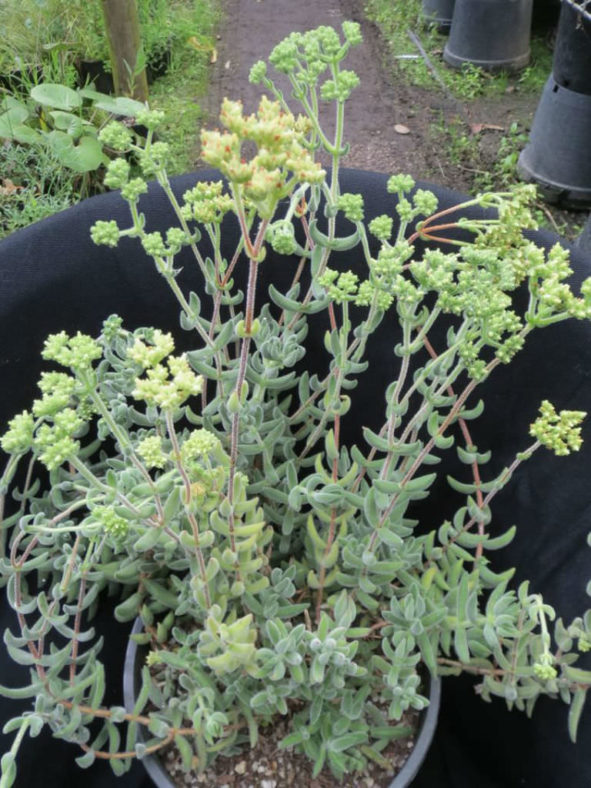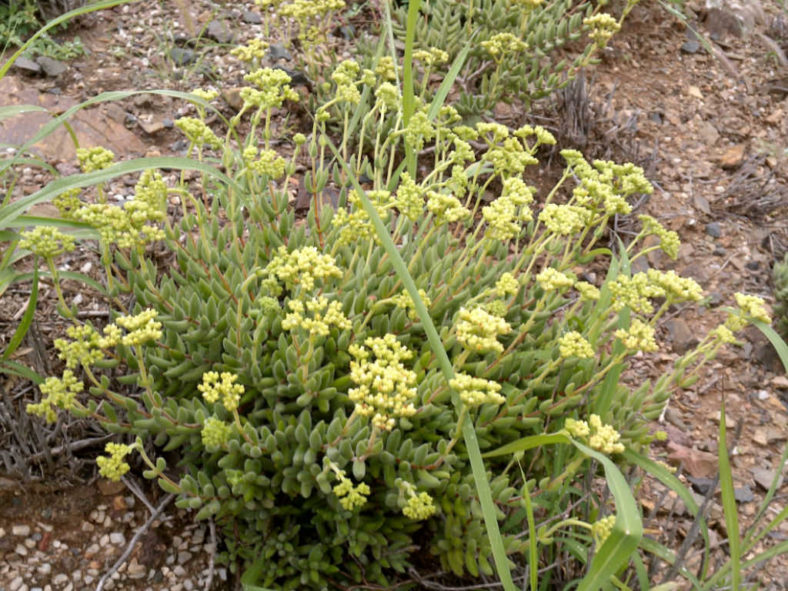Scientific Name
Crassula mesembryanthoides (Haw.) D.Dietr.
Synonym(s)
Crassula mesembryanthemoides, Crassula subulata, Crassula trachysantha, Globulea mesembryanthemoides, Globulea mesembryanthoides, Sphaeritis trachysantha
Scientific Classification
Family: Crassulaceae
Subfamily: Crassuloideae
Genus: Crassula
Etymology
The specific epithet "mesembryanthoides" (pronounced "mess-em-bree-an-THOY-deez") means "resembling plants of the former family Mesembryanthemaceae" and refers to the similar appearance of this species to the members of the former family Mesembryanthemaceae, now included in the family Aizoaceae. The correct and commonly used spelling of this epithet is "mesembryanthemoides," but because Dinter used the spelling "mesembryanthoides" in his original description, it has to be accepted as correct.
Origin
Crassula mesembryanthoides is native to South Africa and occurs in the Karoo and Valley Bushveld in the Eastern Cape province.
Description
Crassula mesembryanthoides, also known as Crassula mesembryanthemoides, is a small succulent shrub with green, fleshy, and hairy stems that turn woody and reddish-brown over time. It can grow up to 16 inches (40 cm) tall. The leaves are green to yellowish-green and densely covered with soft recurved hairs. They are ascending, linear-elliptic with a pointed tip, measuring up to 0.4 inches (2 cm) long and 0.15 inches (0.4 cm) wide.
The flowers are small, bell-shaped, white to cream-colored, and appear in clusters at the end of the branches in fall and winter.

How to Grow and Care for Crassula mesembryanthoides
Light: Crassula plants prefer full sun to partial shade. However, intense afternoon sun in the hottest period of summer can burn the leaves of the plants. Most Crassulas can be grown indoors if given enough light.
Soil: They are not particular about soil pH, but Crassulas require very porous soil with excellent drainage.
Hardiness: Crassula mesembryanthoides can withstand temperatures as low as 30°F to 50°F (-1.1°C to 10°C), USDA hardiness zones 10a to 11b.
Watering: These plants have typical watering needs for succulents. Avoid overwatering using the "soak and dry" method, where the soil is soaked with water, slowly drained, and left to dry out before watering again. Reduce watering in winter.
Fertilizing: Crassulas will benefit from a small amount of organic fertilizer in mid-spring when they start actively growing.
Repotting: Repot as needed, preferably in spring, at the beginning of active growth.
Propagation: Crassulas are generally started by leaves or stem cuttings, but they can also be grown from seeds and offsets.
Learn more at How to Grow and Care for Crassula.
Toxicity of Crassula mesembryanthoides
Crassula plants are generally nontoxic to people and pets.
Hybrids of Crassula mesembryanthoides
Links
- Back to genus Crassula
- Succupedia: Browse succulents by Scientific Name, Common Name, Genus, Family, USDA Hardiness Zone, Origin, or cacti by Genus
Photo Gallery
Click on a photo to see a larger version.


